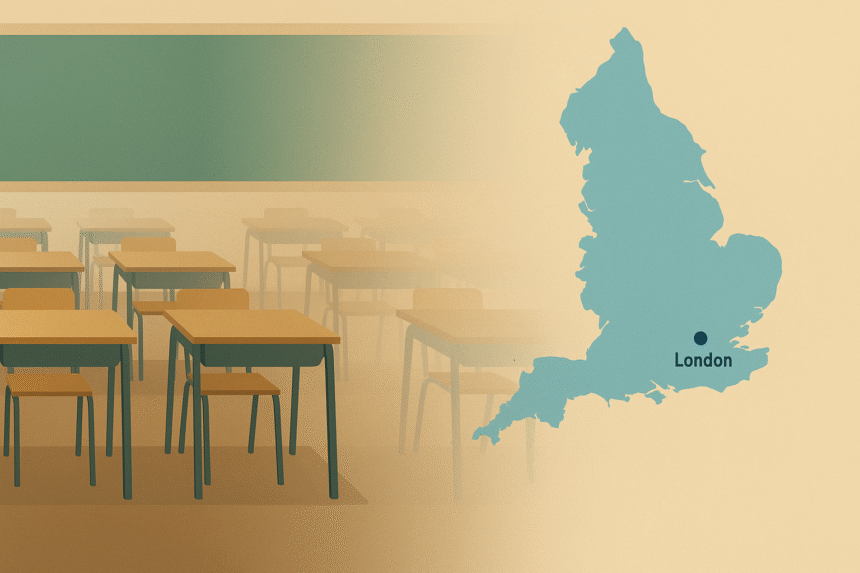England’s primary schools are facing an unprecedented number of unfilled places, with enough empty seats to fill 23,000 classrooms, according to a new report by the Institute for Government (IfG). The findings underscore the growing financial and structural pressures on the education system amid falling birth rates and shifting population patterns.
Record High in Unfilled Primary Places
During the 2023–24 academic year, an estimated 611,300 primary school places across England were left vacant — equivalent to 12% of all available spots. This represents an increase of nearly 34,000 compared with the previous year and the highest figure since records began, the IfG said in its analysis, funded by the Nuffield Foundation.
The trend has been most severe in London, where pupil numbers have dropped at almost twice the national rate. Since 2018–19, the capital’s primary schools have lost 8.1% of their pupils, the equivalent of about 2,060 classrooms.
Causes: Demographic Shifts and Family Migration
Falling birth rates and an exodus of families from the capital in search of cheaper housing and childcare have been major contributors to the decline. Between 2019 and 2024, 36 state primary schools in London closed as enrolment continued to fall, with more facing potential mergers or closures.
Analysts warn that the decline in pupil numbers will likely translate into reduced government funding, as school budgets are tied to enrolment figures. Many local authorities are already under financial strain, raising concerns about further cost-cutting measures, staff reductions, or school closures.
Secondary Schools Begin to Feel the Impact
While the problem has been most acute in primary education, the effects are now beginning to appear in secondary schools as well.
For the 2024–25 academic year, several regions — including London, the North East, the South West, and Yorkshire and the Humber — recorded small drops in secondary school enrolments compared with the previous year. London saw the sharpest fall, with a 0.8% decline in pupil numbers.
SEND Pressures Deepen Financial Strain
The report also highlights the growing crisis in the special educational needs and disabilities (SEND) sector. Despite falling overall enrolment, demand for SEND support continues to rise sharply. The IfG found that two-thirds of state special schools are now operating beyond capacity, while the average Education, Health and Care Plan (EHCP) costs £1,000 more per pupil than the funding schools receive.
Amber Dellar, the report’s author, said the education system is struggling to adapt to demographic shifts while also meeting rising SEND demand.
“The government has big ambitions to improve schools, but a budget that falls short of matching them,” Dellar noted.
“Falling pupil numbers are tying up money in empty classrooms, while the SEND crisis is creating additional financial strain.”
Government Response and Delayed Reforms
The Department for Education (DfE) acknowledged the challenges, stating that the current administration “inherited a SEND system on its knees.” A long-awaited white paper outlining reforms to SEND provision, initially expected in autumn, has now been delayed until January.
A DfE spokesperson added:
“We’re determined to deliver a better system that supports children and families at every stage. We’ve already conducted more than 100 listening sessions with families, and ministers will continue engaging with parents to ensure better outcomes for every child.”
Outlook
The combination of demographic decline, funding pressures, and rising special needs demand poses a significant challenge for England’s education system. Experts warn that unless the government implements coordinated reforms — balancing efficiency with support for vulnerable pupils — more schools could face closure, particularly in urban areas like London.








